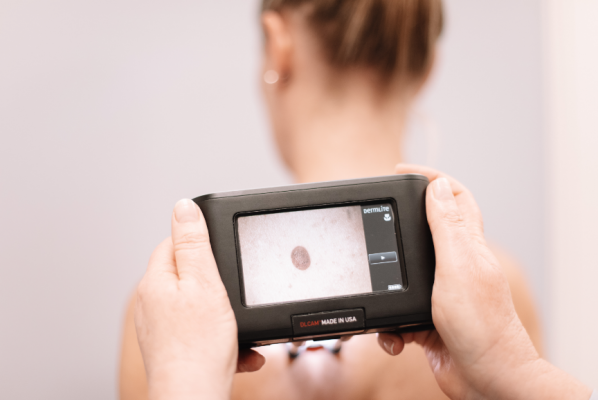
16/03/2023
More than two in three Australians will be diagnosed with some form of skin cancer in their lifetime and one person dies from melanoma in this country every six hours. It’s the most common type of cancer found in young Australians, but fortunately it’s also one of the easiest to detect and 90% of cases can be completely cured.
Those are numbers that Eloise Oxenberry thought about a lot while tending to critically ill patients over the last decade. “Being a nurse in the ICU often means looking after people who’ve had a brain tumour or part of their lung removed because of a melanoma that spread to other parts of the body,” she says. “And I was interested in being on the preventative side of nursing, because it feels a lot better working to prevent melanoma rather than treat it.”
It’s why she studied Melanography and now helps to identify potential skin cancers at MoleMap Norwood. Spotting a melanoma on a 22 year old patient last year was a reminder that “it can happen to anyone”, and Oxenberry recommends an annual skin check for all Australian adults to detect any potential melanomas before they spread. Every appointment begins with a 20 minute skin check using a dermatoscope that lets her examine any moles up close. If there are any moles of concern, she then captures images with a microscopic camera and sends them to a team of dermatologists for further assessment.
Oxenberry says that patients regularly comment that “they’re the most thorough checks they’ve ever had; people will often say that they’ve never had their scalp checked or between their toes.” But that attention to detail is important, because “melanoma doesn’t discriminate, it can occur anywhere on the body and it’s not necessarily where UV is exposed.”
What really sets MoleMap apart, however, is the signature Full Body MoleMap surveillance technology. This process creates a complete photographic record of your skin with any moles that require attention entered into a mapping program and re-imaged each year to monitor for changes. This means that any melanomas (or other skin cancers including squamous cell carcinoma and basal cell carcinoma) can be detected early, when they’re most treatable. And because it’s designed to monitor changes to your skin over time, the service includes free spot checks between the recommended annual visits if you find something you’re worried about.
This cutting edge technology is a large part of the reason that more than 300,000 patients have chosen MoleMap. “The combination of total body photography and mole mapping software allows us to track moles dermoscopically as they’re changing… it’s what makes MoleMap the gold standard.”



